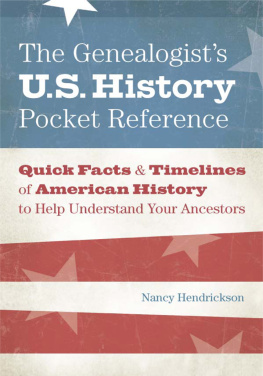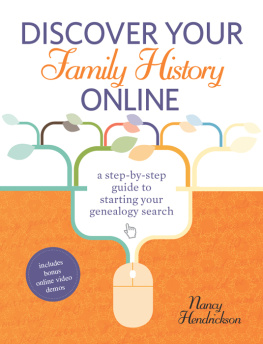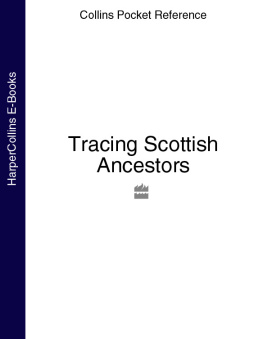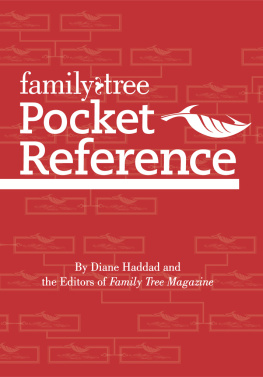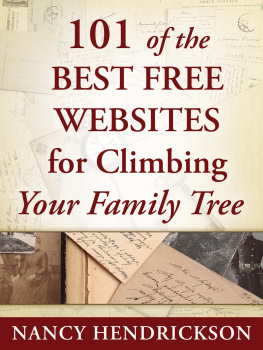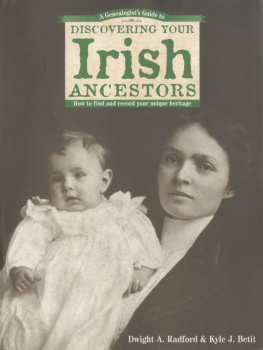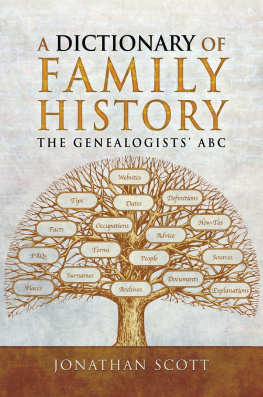The Genealogists U.S. History
Pocket Reference
Quick Facts & Timelines of American History to Help Understand Your Ancestors
Nancy Hendrickson

Cincinnati
shopfamilytree.com
Introduction
Genealogists acquire many skills throughout their research, among them the unofficial title historian. Thats because it oftentimes takes a knowledge of historical events, places or people to unlock family tree puzzles.
From one census to another, ancestors seemingly disappear off the face of the earth. But in studying the history of a specific time or place, genealogists learn to map well-known migrations, trace early pandemics and follow the trail of military upheavaleach of which could have sent the family moving from one place to another.
To help in your family tree research, weve compiled key resources in American historyfrom political and military battles to popular books, famous people, maps, immigration statistics and favorite foods. Youll find it all in an easy-to-read format that spans six eras, from colonial America to 1945. Keep this guide in your pocket or bag as a quick reference to the most significant events in the countrys past.
How to Use This Book
Check the table of contents of this book to familiarize yourself with the information inside it. When youre trying to find an ancestor in a specific era, consult the chapter on that era. The events of the era may have directly impacted your ancestor. Wars create service records for soliders, but also may have displaced your ancestors if fighting took place on their land. Disasters and disease also displace people. Additionally, youll find listings of censuses taken during the time period. Search these census records in online databases, such as subscription site Ancestry.com or free site FamilySearch .
Colonial America to 1763
About the Era
The late 16th and early 17th centuries were an era of seagoing exploration. Men whose names now fill history books were among the first Europeans to set foot upon the North American continent: Hudson, Coronado, de Soto, La Salle, Joliet, Raleigh, Drake and Marquette. While the Spanish sought gold, the French and Dutch were eager to build a fur trade empire. The English, alone, sought a New World where colonies could be established based on religious tolerance.
America Before the Europeans
More than 10,000 years ago, America was settled by indigenous peoples crossing the land bridge from northeast Asia. They were primarily nomads, hunters and foragers.
One of the greatest cultures to arise was the Anasazi. Many of their cliff dwellings in the southwest still stand, with the most famous being Mesa Verde in present-day Colorado.
On the eastern part of the continent, Native Americans known as the Mound Builders constructed earthworks that were probably burial mounds or temples. These people lived on the eastern edge of the great prairies. Mound Builders were comprised of two groups: Woodland and Mississippian.
Woodland mounds were built as late as the 18th century, with the most noted in southern Ohio, built by the Hopewell culture. The Mississippians began mound building about 700 C.E. in the central and lower Mississippi River. The Cahokia Mounds in Illinois (near St. Louis) are the best known remnants of this culture.
Exploring the Continent
Explorer | Date | Place |
Leif Eriksson | 1000 C.E. | Baffin Island |
Christopher Columbus | 1492 | Caribbean |
John Cabot | 1497 | Coast of Maine |
Sebastian Cabot | 1508 | Hudson Bay |
Ponce de Leon | 1513 | Florida |
Jacques Cartier | 1535 | St. Lawrence River |
Hernando de Soto | 1539 | Florida |
Francisco Vsquez de Coronado | 1541 | New Mexico to Kansas |
Juan Rodrguez Cabrillo | 1542 | California Coast |
Sir Francis Drake | 1579 | Central California Coast |
Sir Walter Raleigh | 1584 | Virginia |
Don Juan de Oate | 1605 | Texas, New Mexico |
Henry Hudson | 1609 | Delaware Bay |
Ren-Robert Cavelier also called Robert de La Salle | 1684 | Texas Coast |
TRIVIA: Amerigo Vespucci coined the phrase Mundus NovusNew World. German cartographer Martin Waldseemuller used Vespuccis first name to label the new region.
First Settlements in America
1607: Jamestown
1620: Plymouth
1630: Boston
1634: St. Marys
1635: Hartford
1636: Providence
Formation of the Original 13 Colonies
Colony | Formation | Founded by |
Virginia | 1607 | London Company |
Massachusetts | 1620 | Puritans |
New Hampshire | 1623 | John Mason |
Maryland | 1634 | Lord Baltimore |
Connecticut | 1635 | Thomas Hooker |
Rhode Island | 1636 | Roger Williams |
Delaware | 1638 | New Sweden Company |
North Carolina | 1653 | Virginians |
South Carolina | 1663 | Nobles with a Royal Charter |
New Jersey | 1664 | Lord Berkeley and Sir George Carteret |
New York | 1664 | Duke of York |
Pennsylvania | 1682 | William Penn |
Georgia | 1732 | James Oglethorpe |
Important Documents of the Era
First Virginia Charter, 1606: A document from King James I to the Virginia Company assigning land rights to colonists for the purpose of propagating the Christian religion.
Mayflower Compact, 1620: First governing document of Plymouth Colony, made between the Separatists (seeking religious freedom) and the Strangers (seeking commercial gain).
Charter of Massachusetts Bay, 1629: Royal Charter granted to the New England Company, whose goal was to change the emphasis of the colony from trade to religion.
Fundamental Orders of Connecticut, 1639: Established the basics of government in Connecticut.

